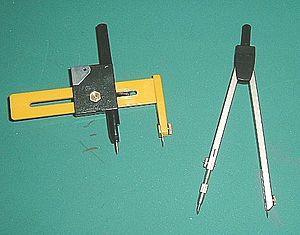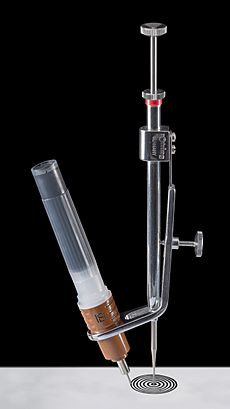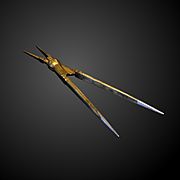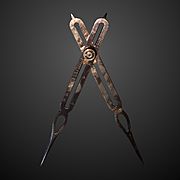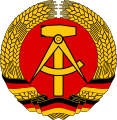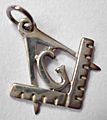Compass (drawing tool) facts for kids
A compass (also called a pair of compasses) is a cool tool used for drawing perfect circles or parts of circles called arcs. It can also be used like dividers to measure distances, especially on maps. You'll find compasses used in mathematics, for making technical drawings, in navigation, and for many other things.
Long ago, before computers were common, compasses and other drawing tools often came in a set. Later, special circle templates helped with drawing circles. Today, computers and computer-aided design (CAD) programs do a lot of this work. So, physical compasses are mostly used to teach geometry and technical drawing in schools.
Contents
Parts of a Compass
Compasses are usually made of metal or plastic. They have two "legs" joined by a hinge. You can adjust this hinge to change the size of the circle you want to draw. One leg usually has a sharp point (a spike) to hold it steady. The other leg holds a drawing tool, like a pencil, a small piece of pencil lead, or sometimes a pen.
Handle
The handle is a small, bumpy rod above the hinge. It's usually about half an inch long. You hold it between your pointer finger and thumb to use the compass.
Legs
A compass has two main types of legs:
- The steady leg has the sharp point. It stays still and acts as the anchor for your circle.
- The adjustable leg holds the pencil or pen. You can move this leg to make circles of different sizes.
Hinge
A screw through the hinge holds the two legs in place. You can tighten or loosen this screw to make the compass stiffer or looser. A tighter hinge helps you draw more accurate circles. Some better quality compasses have a small, toothed wheel between the legs for fine adjustments. They might also have a strong spring around the hinge. These are often called "Spring-Bow Compasses."
Needle Point
The needle point is on the steady leg. This sharp point is the exact center of the circle you are going to draw.
Pencil Lead
The pencil lead is what actually draws the circle on your paper. Sometimes, people use an ink nib or attach a technical pen instead. High-quality compasses often have their pencil lead sharpened to a special "chisel edge" shape, not just a sharp point.
Adjusting Nut
This small nut holds the pencil lead or pen firmly in place in the adjustable leg.
How to Use a Compass
To draw a circle, you push the sharp point of one leg into the paper. Then, you place the pencil on the paper and move it around while keeping the legs at the same angle. Some people find it easier to hold the compass still and rotate the paper instead. You can change the radius (the distance from the center to the edge) of your circle by adjusting how wide the two legs are apart.
Compasses with two sharp points, called dividing compasses (or just "dividers"), can measure distances on a map. You set the hinge so the distance between the points on the map stands for a certain real-world distance. Then, you can "walk" the compass along a path on the map to figure out the total distance.
Compasses and Geometry
Compasses-and-straightedge constructions are used to show important ideas in plane geometry. Even though we use real compasses to draw, the "ideal" compass in geometry proofs is perfect. It can draw a circle from a point with a certain radius, but then it "disappears." It can't just be moved to draw another circle of the same size. However, the ancient Greek mathematician Euclid showed that even this "collapsing compass" could do everything a real compass can do.
Different Kinds of Compasses
- A beam compass is a longer tool, often with a wooden or metal bar. It's used for drawing very large circles that a regular compass can't make.
- Scribe-compasses are used by carpenters and other craftspeople. They can draw circles, but also trace lines. They are very simple, often made of bent metal. One leg holds a pencil, and the other has a fine point. A wing nut tightens the pencil and locks the desired distance.
- Loose leg wing dividers are strong tools made of steel. They are good for drawing circles and for marking off repeated measurements very accurately.
- A reduction compass or proportional dividers helps you make patterns bigger or smaller while keeping the angles the same.
- Compass variants
Compasses as a Symbol
A pair of compasses often stands for being precise and smart. That's why you see it in logos and symbols, like the Freemasons' Square and Compasses and in various computer icons. The English poet John Donne even used the compass as a symbol in his poem "A Valediction: Forbidding Mourning" (written in 1611).
See also
 In Spanish: Compás (instrumento) para niños
In Spanish: Compás (instrumento) para niños
- Dividers
- Circle
- Geometrography
- Masonic Square and Compasses
- Technical drawing tools


